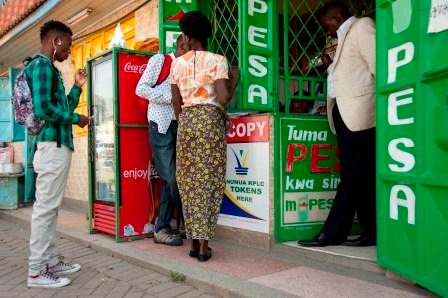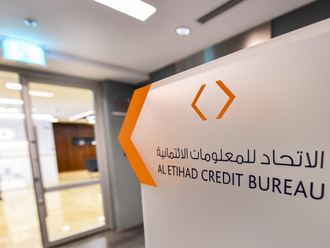
Abdul Rahman transfers a quarter of his salary — Dh350 — to India, for his family’s monthly expenses and perhaps to get his daughter enrolled in school. “I wish they would reduce the fees so my family would receive the full amount,” he says wishfully, counting the few notes he has left. After the provider deducts Dh20 (about Rs340) in remittance fees, his family would receive only Rs5,650 of the total Rs5,990 paid. In rural India, where Rahman hails from, Rs340 could cover a month’s electricity bill and the cost of some groceries.
Arabell Lagera, the sole breadwinner of her family, transfers a considerable part of her salary to her mother and children in the Philippines every month. Despite choosing an instant cash-to-cash transfer service because of the speed of remittance and the convenience of an outlet located close to home, she says, “My mother often has to wait long hours or travel to the main office to receive the money because the smaller offices do not have ready cash on hand.”
Her remittance fee comes to around Dh25 per transaction, which is roughly 300 Philippine pesos — an amount that can buy more than 5kg of rice in the country. “I also try to ensure that the money my mother actually receives is a rounded figure, because they tend to take away small change in the name of fees, although the full remittance charges have been paid by me,” Lagera says.
However, Anil Kumar, a non-resident Indian who regularly remits about Rs30,000 per transaction, has no complaints.
Interestingly, none of the people GN Focus spoke to were aware of the actual costs of remittance and assumed the fee was to cover the service provider’s establishment costs and commission.
Behind the fees
As per the World Bank, 2014 estimates show that remittances from the UAE touched $29.25 billion (Dh107.4 billion). India led with $12.6 billion, followed by Pakistan ($4.1 billion), Bangladesh ($2.6 billion), Egypt ($1.8 billion) and Philippines ($457 million). Nigeria received the most in Africa ($150 million), while France got $130 million and the US $34 million.
“From a customer perspective, there is only a single flat fee per transaction, depending on the destination, and embedded within it is the exchange rate,” says Promoth Manghat, Deputy CEO, UAE Exchange. “[But] the remittance service provider (RSP) bears several costs, which can be broadly classified into three categories: direct technology costs for the maintenance of systems and networks, cost of moving money (including regulatory and compliance costs), and that of maintaining the distribution network with bank accounts or via cash disbursement.”
Bhairav Trivedi, CEO of Network International, the majority equity partner at India-based global digital payment service provider TimesofMoney, says considerable costs are involved because compliance is a moving target for the remittance industry. “RSPs have to constantly change the way they work to check the visibility and identification of customers and ensure that the regulatory requirements of different geographies are met,” he explains.
Every customer — both at the remittance and recipient ends — and every transaction has to undergo KYC procedures, he adds, regardless of the value of the transaction. This is a fixed cost, and involves checking against certain databases that are regularly updated.
“Given that most transactions tend to be less than Dh1,000, it makes the transaction costs — in percentage terms — look relatively high,” says Trivedi. “Sadly, this is a reverse system, where the remittance fee tends to decrease for larger amounts, because RSPs can make more profit on the foreign exchange. “The harsh fact remains that people who are least able to pay are probably the ones who bear the brunt.”
While commenting on the matter of hidden fees, Hatem Sleiman, Regional Vice-President — Middle East at Western Union, advises caution. “Consumers are advised to ask about the exact amount of money the receivers will get and make sure they calculate any additional fees the receivers may incur, as lower fees are not always all inclusive,” he says.
Sending home love
Dilip Ratha, an economist at the World Bank, was perhaps the first to analyse the significance of remittances or “dollars wrapped with love”, as he calls them, and their overwhelming contribution in alleviating poverty, decreasing school dropout rates, improving infant birth weights and uplifting the lives of people in developing countries. With this in mind, a concerted effort is being made to bring down the cost of remittances, led by Ratha and other like-minded individuals.
In 2009, the bank’s Global Remittances Working Group launched the 5x5 initiative in coordination with the G8 and G20 countries to reduce average costs of transferring money from 10 per cent to 5 per cent in five years globally. And positive results have begun to emerge.
According to its updated Remittance Prices Worldwide (March), the total global average of sending money declined from 7.99 per cent in the last quarter of 2014 to 7.72 per cent in the first quarter of this year. South Asia remained the least costly region to send money to, with fees averaging about 6.78 per cent, while sub-Saharan Africa continued to be the most expensive despite dropping prices. In the Middle East, the UAE-Pakistan corridor incurs the lowest cost — and it’s free when transferring to a bank account — while UAE to India follows closely with less than 3 per cent in fees.
“The UAE is a classic example of how regulation, infrastructure development, technology and competition have contributed to reducing remittance costs,” says Manghat. “There are almost 125 money transfer operators (MTOs) in the UAE, whose branch networks make up about 1,000 outlets. With the regulators opening up the market to several players, competition is high, [thus] driving prices down.”\
Technology helps
Extensive adoption of technology among UAE banks has also enabled RSPs to transfer money instantly to bank accounts. This is in sharp contrast to markets such as South Africa and Europe where monopolistic policies, lack of competition and exclusive arrangements have kept costs relatively high. Expenses are also higher in other parts of Africa and the Philippines, because money is often disbursed in cash.
“The cost of doing business varies as different countries have different levels of business infrastructure availability,” says Sleiman. “Investments may be needed to get infrastructure readiness, essential to build an extensive network that allows consumers to meet their needs for convenience, speed and reliability in transferring money to cities, towns and villages across Africa.”
India, which received about $70 billion in remittances last year, has an established
financial infrastructure, enabling a significant move from cash disbursement to bank accounts and resulting in reduction in remittance costs. “At UAE Exchange, remittances to bank accounts in India comprise 80 per cent of total remittances, as opposed to a few years ago when more than 60 per cent were cash disbursements,” says Manghat.
Cash disbursement is generally more expensive due to the added cost of maintaining liquid assets at the receiving end, in addition to the cost of insurance and security while handling cash.
Additionally, there is potential to drive down remittance costs further by ensuring that funds are transferred electronically to national ID instruments. Although not mandatory, India’s Aadhaar is a unique identification number that will serve as proof of identity and address, similar to the Emirates ID in the UAE. The government is working to enable financial transactions via the card to further financial inclusion. In time, it could be possible to remit money to the Aadhaar card.
Then there’s RuPay, a new card payment scheme launched by the National Payments Corporation of India. Once fully developed, it would work like any credit and debit card on the network and include the remittance options available for such products.
In Pakistan, the government is backing the Pakistan Remittance Initiative, a scheme whereby remittance to a bank account in Pakistan is free of charge, with the cost being borne by the country’s Central Bank. This move changed the entire dynamics of the industry, legalising funds that used to be transferred through the hawala system. It has enabled healthy growth in foreign exchange reserves, and Pakistan now receives around $17 billion in remittances, compared to $1.5 billion earlier.
India also recently announced plans to levy a service tax on the fee receiving banks charge overseas exchange houses, with the objective of reducing remittance costs. But there are concerns that this proposal could rebound, as banks will transfer the tax to MTOs, who may pass it on to the customer.
“If governments want the cost of remittances to go down, they need to push banks to support the legitimate industry, while ensuring that all MTOs have adequate compliance structures and [are] committed to regulation,” says Trivedi. His remarks also resonate in the context of the recent policy of de-risking being adopted by banks that are increasingly refusing to work with MTOs, and the possible adverse impact
on the remittance industry.
Eventually, it all seems to come down to financial inclusion, and across developing countries, there is an increased focus on integrating the unbanked into the banking system, which, in turn, will drive down costs. Perhaps then, families of people like Rahman will receive the full value of remittances sent home.












